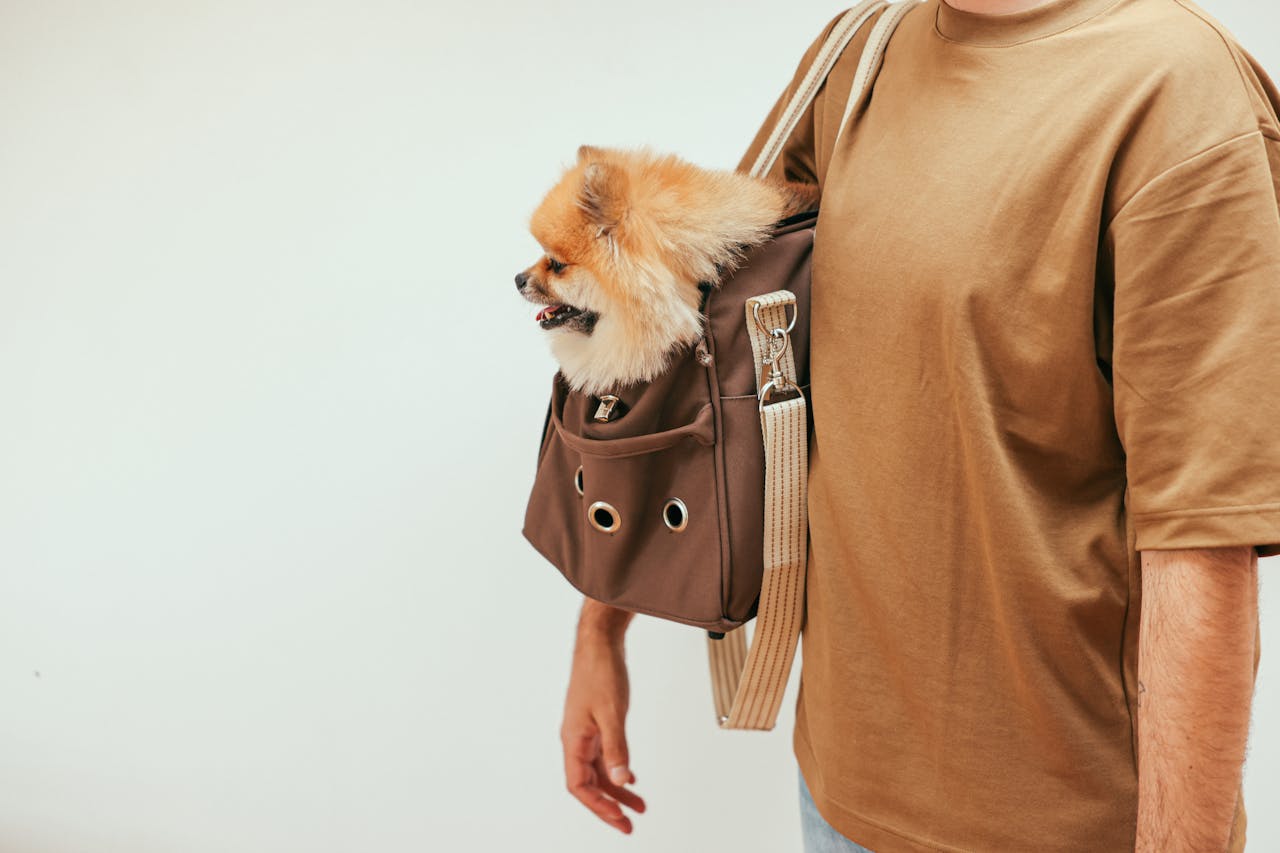Write Us: hello@ali5.org
Pet-Friendly Travel: How to Explore the World With Your Furry Sidekick
Planning a trip with your pet? Discover essential tips for stress-free, pet-friendly travel, from choosing the right transportation to finding stay options and keeping your furry friend safe and happy.

Traveling without your pet? I can’t imagine it. My dog (or cat, or rabbit, or whatever you’ve got) is part of the adventure. But traveling with a furry companion takes planning and patience. Skip the overwhelm. With preparation, you and your pet can explore together without losing your minds (or your security deposit).
Here’s how to make pet‑friendly travel actually work.
Why It Works: The Joy of Seeing the World Together
We’re talking about more than just bringing your pet along. Travel with your pet gives you shared experiences, less stress when you’re away from home, and more reasons to linger. Morning walks feel different when someone’s sniffing every corner beside you. Cafe pit stops become mini outdoor adventures. Pet travel isn’t just possible, it can add depth to the whole experience.
Step 1: Pick Pet‑Friendly Destinations That Suit Your Vibe
Just because a place is “pet‑friendly” on paper doesn’t mean it fits your pet or your travel style. Ask yourself:
-
Can they handle the climate?
-
Is there enough walkable space or pet‑friendly parks?
-
Are outdoor restaurants and cafes welcoming pets?
-
How far from home is the nearest vet or emergency clinic?
For example:
-
Beach towns often allow leashed pets even in shoulder season.
-
National parks might have strict rules, so check in advance.
-
Urban escapes with pet‑friendly hotels, cafes, and big sidewalks? You’re good.
Step 2: Paperwork and Passports (Yes, Really)
If you’re traveling internationally with your pet, there’s paperwork, usually more than you’d expect. Here’s what you’ll likely need:
-
Updated vaccinations (especially rabies)
-
Health certificates signed by a vet within a certain timeframe before travel (often 10 days)
-
Pet ID tags and microchip details
-
Possible quarantine rules depending on the country
Even domestic travel can require documentation, especially if you’re crossing state or regional borders. Don’t assume hotels and airlines will take care of it for you. Have your own copies, both digital and printed.
Step 3: Booking the Right Flights, Trains, or Ferries
Airlines and other transportation services have different pet policies, and they vary in fees and how they handle pet carriers. A few smart moves here:
-
Travel as early in the day as possible to reduce waiting and stress.
-
Use a hard‑sided carrier for airlines and a soft one for trains or buses (if allowed).
-
Keep your pet calm with familiar toys, treats, and a blanket from home.
-
Double‑check the dimensions and weight allowances; most aircraft only allow pets in the cabin if under ~8kg, including carrier.
-
Some airlines limit the number of pets per flight; book early.
For train or ferry travel (where your pet may stay with you), check if dogs must be leashed or muzzled in public areas, and whether they’re welcome at dining cars or only in specific sections.
Step 4: Choosing the Right Accommodation
Your go‑to travel hacks (Airbnb filters, booking.com, BringFido, PetsWelcome, petfriendly.io) get you halfway there, but what matters most?
-
Are pets truly allowed or just tolerated?
-
Is there access to grass or a courtyard?
-
Do rooms come with tile floors or carpet (easier to clean if there’s an accident)?
-
Are there pet bowls, dog beds, or food stored safely?
-
How far is the nearest green space?
In Airbnb situations, talk to the host in advance. Ask if they’ve hosted dogs/puppies before; this cuts down on surprises or unexpected extra fees.
Step 5: Packing Light, but Smart
Your pet needs stuff, too, but you can keep it minimal.
Here’s what I always pack:
-
Travel food in ziplock bags (pack small days’ worth; buy more locally if needed)
-
Collapsible bowls (food + water)
-
Leash, collar with ID tag, and spare harness
-
Familiar blanket or small toy
-
Pet first‑aid kit: tweezers, bandages, antiseptic
-
Waste bags and portable mat if needed
-
Medications, vitamins, flea/tick treatments
If you’re renting or staying where soap/detergent is provided, you can skip full champoo bottles. And disposable pee pads may save you from white‑knuckle apartment cleanings.
Step 6: Setting the Pace on the Road
Even the most outgoing pet can feel out of sorts when their world shifts. To minimize stress:
-
Keep feeding and walking schedules consistent, even across time zones.
-
Let them settle in before exploring too far (explore the new apartment block, venturing farther later).
-
Keep walks short on the first day, let them sniff and adjust.
-
If your pup is sensitive to motion sickness, bring calming treats or ask your vet about remedies.
-
Avoid overstimulating spaces, start with quiet parks, then move toward busier areas.
Stick to familiar routines to reduce anxiety. If your dog gets a walk and an afternoon nap every day at home, try to replicate that even on vacation.
Step 7: Respect Local Etiquette and Laws
Not all countries or regions treat leashed pets like local residents do. Some places have strict leash rules, banned breeds, or fines for dog poop left behind. A few tips:
-
Learn local leash and cleanup rules, especially if you’re traveling in Europe, Asia, or eco-sensitive regions.
-
Ask before entering a business or cafe with your pet, even if the sign says “pets allowed,” they may mean service animals only.
-
Don’t assume parks are automatically pet‑friendly; some urban parks restrict dogs during busy hours.
Know where you can, and can’t, bring your friend.
Step 8: Handle Emergencies Smoothly
Vet visits aren’t fun, but they happen. Best case? Know where there’s a clinic nearby. Here’s how to be ready:
-
Look up at least one nearby vet or emergency clinic as soon as you arrive in a new destination.
-
Carry contact info for your home vet in case translators are needed.
-
Keep digital photos of your pet’s microchip and medical info.
-
If your pet’s on medication, bring enough for the full trip plus extra; getting refills abroad can be tough.
Being proactive here cuts down on real stress later.
Step 9: Make Travel Part of the Adventure
Your trip doesn’t stop being playful just because you’re traveling with a pet. Here are ways to make it feel like one big adventure:
-
Choose hiking trails that allow dogs, bonus points for scenic views and water access.
-
Find lakes, beaches, and meadows where your pet can roam safely.
-
Visit outdoor pet events or cafés where local pets gather.
-
Tag along to pet-friendly farmers’ markets or artisanal festivals.
-
Try out interactive gear, like a treat dispenser or ball launcher, so they have a positive outlet.
Pack into experiences, even if “adventure” means a long snuffle hike under shade trees on a hot day.
Final Thoughts: Travel Better with Your Pet
Traveling for a weekend with your dog taught me something important: it’s not about having a perfect itinerary. It’s about sharing life with a companion in new surroundings. The grass smells different, the sidewalks feel different, the pace slows, and the trip surprises you both.
With smart planning and a few carried essentials, pet-friendly travel can be effortless and deeply rewarding. You’ll save money on pet sitters, build unforgettable memories, and return home with a deeper bond and zero regret.
So go ahead. Book that trip. Pack the leash. And show your pet the world. It’s worth it, even the airport security line feels better when someone gets excited seeing you.







